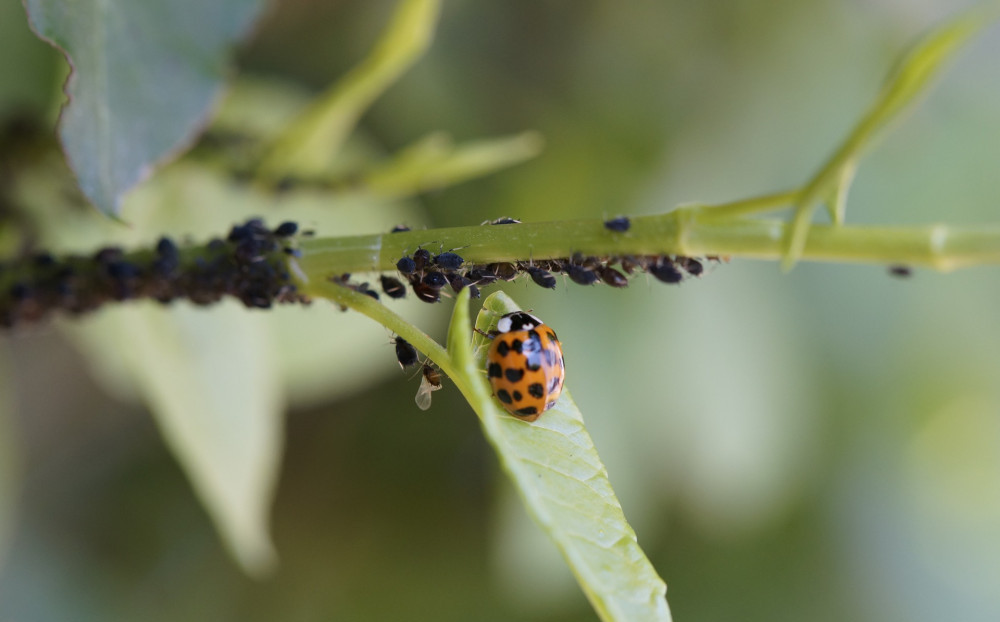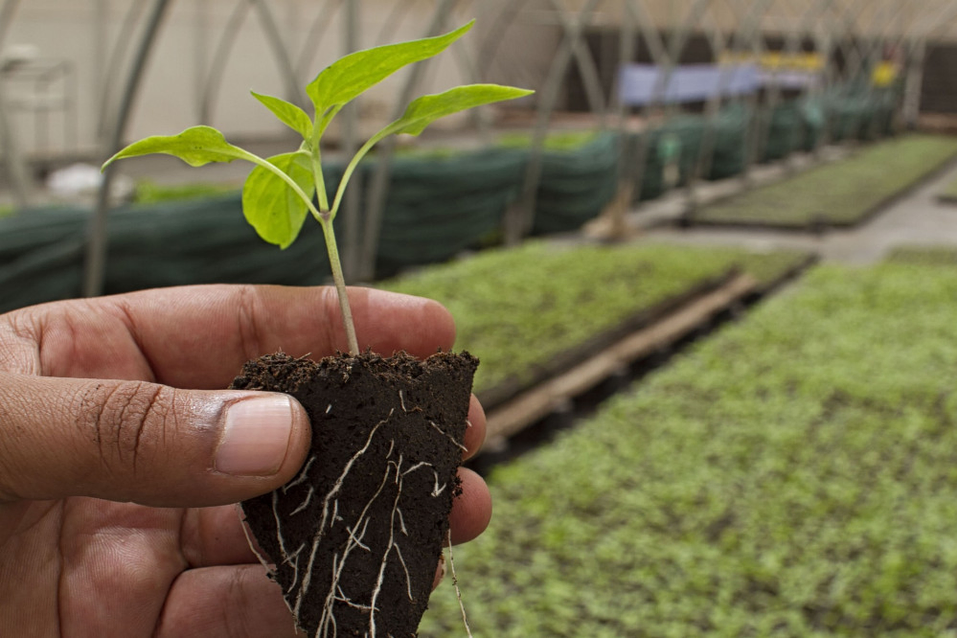As was noted in Part 1 of this series, soil degradation has become increasingly prevalent throughout the world. Studies show that if nothing is done to improve conditions and incorporate better practices, we will lose our topsoil within the next 60 years. Good topsoil has astounding benefits. It not only adds nutrients, including vitamins and minerals to the crops we eat, but it has a remarkably powerful ability to attract carbon from the atmosphere. This can have a profound effect on climate change.
There are many reasons why the topsoil is deteriorating. However, all is not lost. Learn how to save our soil as beginner gardeners and see what government agencies and non-profit organizations around the world are doing to mitigate this problem.
Click to access Part 1 “Topsoil – On the Verge of Extinction” if you have not already read it.

(Some of the links within this post are affiliate links on which I receive a small compensation from the sale of certain items with no extra cost to you.)
(As an Amazon Associate I earn from qualifying purchases.)
Government Agencies
After researching this topic, I was happy to learn there are so many good practices being utilized in farming to help save our soil. Below are just a few I’ve highlighted from my hours of research.
US Department of Agriculture
Soil Health Movement
This movement, which is run by top agricultural researchers, has been encouraging farmers to work with the natural system rather than fighting against it. They explain that soil will come back if given the opportunity. Soil is much more robust and resilient than most people believe. Some practices this movement advocate include:
1. Cover Crops
Never have bare soil. Instead plant cover crops. Cover crops are crops grown to protect and enrich the soil. Their main objective is to cover the soil rather than to harvest a crop. In this way, they manage soil erosion, weeds, pest, and diseases and promote soil fertility, soil quality, water, biodiversity and wildlife in an agroecosystem. One good example of a cover crop is legumes which naturally return nitrogen back into the soil.
2. Biological Controls
Rather than use fertilizers and chemicals, use biological controls. According to the Connecticut Agricultural Experiment Station, “biological control is the use of living organisms to suppress pest populations, making them less damaging than they would otherwise be. Biological control can be used against all types of pests, including vertebrates, plant pathogens, and weeds as well as insects, but the methods and agents used are different for each type of pest”.
There are 3 categories of natural enemies of insect pests used to protect crops.
One category is predators. We all know birds, fish, and mammals feed on insects. However, they rarely focus on pests unless there is an abundance of them. Therefore, you can’t really rely on them to kill a sporadic attack of pests. The best predators to kill unwanted pests are insects. They are beneficial because they feed on a smaller range of prey species. These include, but are not limited to lady bugs, lacewigs, flower bugs, ground beetles and spiders.

Parasitoids, another category, have immature stages of growth that link onto or are ingested by a single insect host (the pest) which eventually kill it.
The third is pathogens. Like all other plants and animals, insects are infected by bacteria, fungi, protozoans and viruses that cause disease. Pathogens can slow or stop the reproduction, reduce the rate of feeding or growth, or ultimately kill the pest that is destroying crops. An example of a pathogen controlling its host is Entomophaga maimaiga, which is a pathogen of the gypsy moth. It was discovered in forests of New England in 1989. It has continued to control the of gypsy moths for years.
3. Alternative Methods of Farming
Some of these methods include organic farming, hydroponics, aquaponics, permaculture, and agroforestry. For a more in depth discussion of these methods, including pros and cons, check out 5 Eco-Friendly Farming Methods That Meet Sustainability.
Others include teaching farmers how to promote good bacteria and microbes and how to put them back into the soil.
United Nations
In 1994, the UN established the Convention to Combat Desertification (UNCCD). One hundred twenty two countries signed on to commit to Land Degradation Neutrality Targets. They worked with farmers to safeguard arable land, repair degraded land, and manage water supplies more effectively. The end result would be a safer, and more just and sustainable future.
There are now 197 parties to the Convention including the United States. The latest Conference of the Parties (COP15) was held in May, 2022 in Abidjan, Côte d’Ivoire. While there, the countries “adopted 38 decisions to improve drought resilience, reduce land degradation, and invest in land restoration efforts.” To learn more about these decisions, click IISD Summary Report 9-20 May, 2022.
The UNCCD has also promoted the Great Green Wall Initiative to help restore 386,000 square miles across 20 African countries by 2030.
In China, they are planting trees around the circumference of the Gobi desert to help curtail the spread and expansion of the desert.
Some of these initiatives are working well, while others, not so much. But they are having positive impacts on individual farmers and are now seen as one solution to land degradation.
Non-Profit Organizations
There are many non-profits out there fighting for more nutritious soil. Here is a list of 8 organizations creating healthier soil to save our planet.
1. 4 Per 1000 Initiative: created by the French government to increase soil organic carbon.
2. African Forest Landscape Restoration Initiative (AFR100): continent wide effort to restore 100 million hectares of deforested and degraded land by 2030.
3. American Farmland Trust (AFT): helps farmers stay on their land by advocating for the farmers, protecting farmland, and changing agricultural policies.
4. Global Soil Partnership: promotes sustainable management and improves governance of soil around the globe.
5. Kiss the Ground: seeks to share a story of hope for the climate through promoting and developing fertile soil.
6. The Land Institute: accelerating polyculture farming solutions and promote growing food in tandem with nature.
7. Rodale Institute: researching the advantages of natural, organic farming practices
8. Soils, Food and Healthy Communities (SFHC): farmer-led organization that uses local indigenous knowledge and agroecological methods to improve food security and nutrition.
For more in depth discussions on these and other organizations, click Food Tank The Think Tank For Food.
Drug Watch
Many farmers use herbicides and chemicals to control weeds and grasses in their fields. However, some of these herbicides can cause irreparable damage to the body. One such herbicide is paraquat. It can lead to fatal poisoning and only licensed professionals are allowed to dispense it.
Drug Watch is a trusted consumer advocacy group that works with medical and legal experts. They teach the public about dangerous drugs and provide advice which enables consumers to argue their legal rights. To learn more information regarding paraquat and its deadly risks from exposure, click drugwatch.com/paraquat.
Paraquat which is one of the most widely used herbicides in the world. It is used to kill weeds and grasses. According to Drug Watch, “Paraquat is sold in concentrated form and is mixed with water and sprayed on crops. Several studies link long-term paraquat exposure to developing Parkinson’s disease. These studies propose that paraquat creates oxidative stress that damages and kills neurons that produce dopamine, increasing the risk of this disease.”
According to the Environmental Protection Agency, ““Paraquat is highly toxic to humans; one small accidental sip can be fatal and there is no antidote.”
For more information on paraquat and its harmful affects, click here for an update from DrugWatch.
Read the latest information regarding the ban on Roundup and the Roundup lawsuit from Drugwatch.

Every Day Gardeners – What to Do?
Get involved
Here are a few suggestions on how you can help mitigate this problem.
Join Global Movements
Conscious Planet-Save Soil: a global movement of everyday people raising awareness of soil degradation, and promoting soil friendly policy changes to ensure a minimum of 3 to 6% organic content is left in, or put back into the soil.
Below is a list of charities for protecting nature.
- The Nature Conservancy
- Conservation International
- Wild Foundation
- Environmental Defense Fund
- Earth Day Network
- Cool Earth
- Trust for Public Land
- Rainforest Action Network
- Sierra Club Foundation
Read and Watch
A documentary called Kiss the Ground narrated by Woody Harrelson is now available on Netflix. It is said to be “passionate, compelling, innovative, groundbreaking, INSPIRES A RARE FEELING OF HOPE!”
Learn from indigenous farmers how to coexist on Earth. Read Learn From Plants.
Gardening Tips
Here are a few things you can do in your own yard to sustain your soil and other ideas to keep our planet green.
1. Reduce the area of lawn on your property and transform it into a natural habitat for flora and fauna.
2. Reduce the amount of fertilizers and chemicals applied on your lawn and garden. Read a review on Earth’s Ally Insect Control.
3. Recycle potted soil. Check out How To Reuse Old Potting Soil.
4. Begin composting. Read Easiest Way to Compost.
5. Get involved in a local garden club or community project to create gardens in urban and suburban areas.
6. Use sustainable methods for vegetable gardens.
7. Practice wise water management by harvesting rainwater.
8. Return microbes and bacteria to the soil through composting.
9. Create a sustainable garden by planting native plants.
10. Talk to neighbors about this issue and make others aware of what’s happening on Earth.
How To Save Our Soil – A Global Problem
I hope you now have some faith and hope that we can save our soil. We’ve come a long way, but not far enough. By making others aware of this problem, joining organizations to help combat soil degradation, and maintaining good farming and gardening practices we will save our soil. Start planting the seed of knowledge and watch how well it grows!!
Thanks for reading this article. If you haven’t already, please read part 1 entitled “Topsoil – On the Verge of Extinction” to get a clearer picture of this dilemma. Please share these articles with neighbors, friends, and family and leave a comment below. I’d love to hear from you.
Happy Gardening!
Nina
